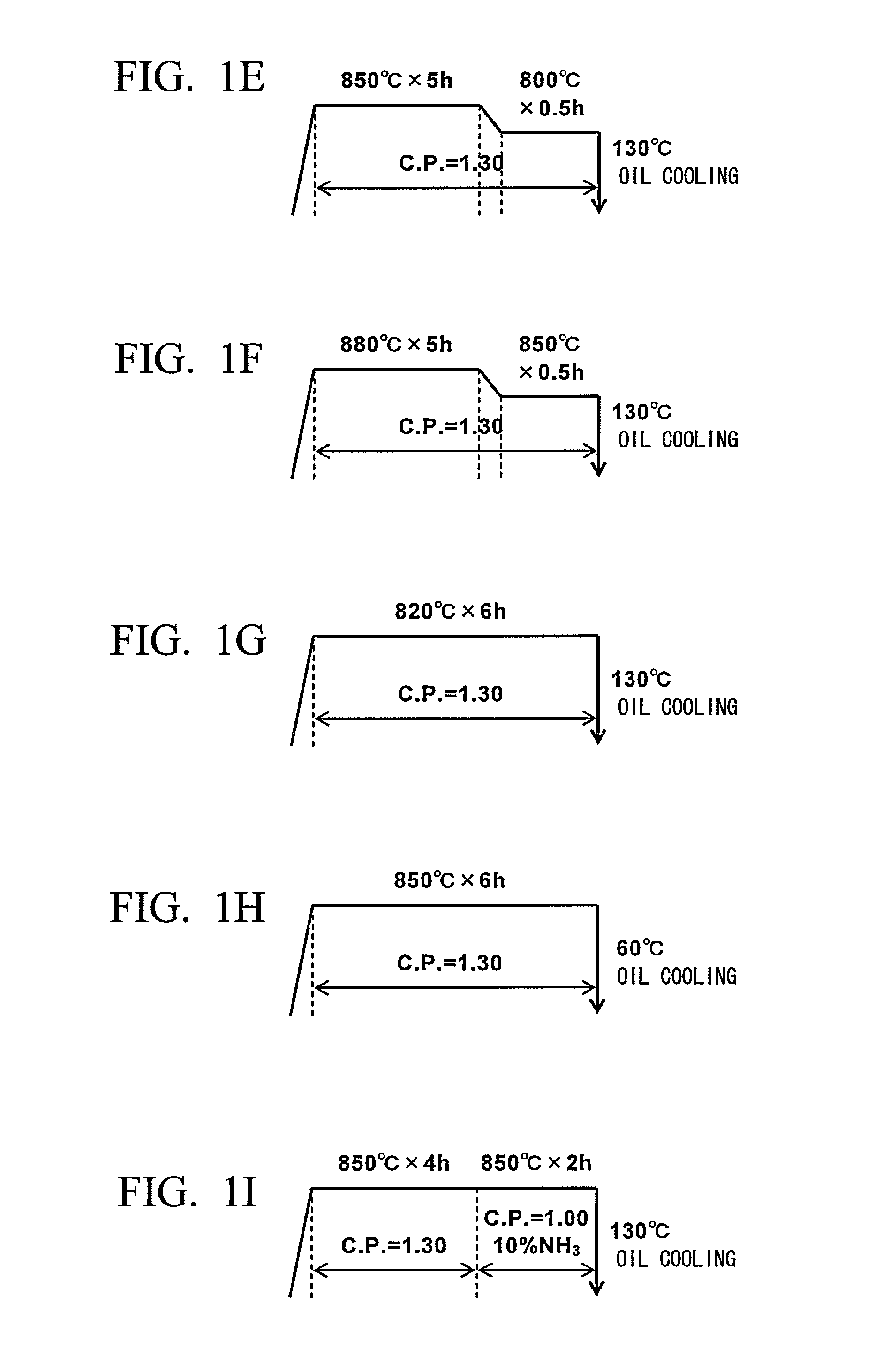Surface layer-hardened steel part and method of manufacturing the same
a technology of surface layer and steel, applied in the field of steel, can solve the problems of difficult drastic improvement, limit of tempered hardness improvement at 300° c., and inability to improve the strength of tooth surface fatigue, so as to prevent the deterioration of the dimensional accuracy of parts, high tooth surface fatigue strength, and low cost
- Summary
- Abstract
- Description
- Claims
- Application Information
AI Technical Summary
Benefits of technology
Problems solved by technology
Method used
Image
Examples
example
[0134]Steels made molten by a converter having the component composition shown in Tables 1 and 2 were subjected to a continuous casting, a soaking diffusion treatment as necessary, and then a blooming rolling, thereby a rolling material of 162 mm square was manufactured. Thereafter, through hot rolling, the rolling material was shaped into a steel bar of 35 mm in diameter.
[0135]
TABLE 1SteelComponents (% by mass)No.CSiMnPSCrNOCr + Si + MnRemarksA0.200.250.850.0150.0152.500.01350.00150.36Steel of theB0.200.250.800.0120.00013.000.00800.00244.05presentC0.200.230.800.0150.0152.250.01500.00153.28inventionD0.600.010.520.0050.1002.000.01400.00262.53E0.102.500.200.0100.0105.000.01200.00207.70F0.150.330.550.0080.0152.750.01300.00253.63G0.190.502.000.0100.0122.450.01250.00014.95H0.300.100.410.0120.0282.100.01350.00202.61I0.180.790.350.0060.0152.250.01000.00253.39J0.220.400.500.00010.0112.500.00200.00133.40K0.201.000.300.0100.0252.350.01450.00213.65L0.200.050.550.0080.0182.600.00600.00303.20M0....
PUM
| Property | Measurement | Unit |
|---|---|---|
| temperature | aaaaa | aaaaa |
| temperature | aaaaa | aaaaa |
| temperature | aaaaa | aaaaa |
Abstract
Description
Claims
Application Information
 Login to View More
Login to View More - Generate Ideas
- Intellectual Property
- Life Sciences
- Materials
- Tech Scout
- Unparalleled Data Quality
- Higher Quality Content
- 60% Fewer Hallucinations
Browse by: Latest US Patents, China's latest patents, Technical Efficacy Thesaurus, Application Domain, Technology Topic, Popular Technical Reports.
© 2025 PatSnap. All rights reserved.Legal|Privacy policy|Modern Slavery Act Transparency Statement|Sitemap|About US| Contact US: help@patsnap.com



